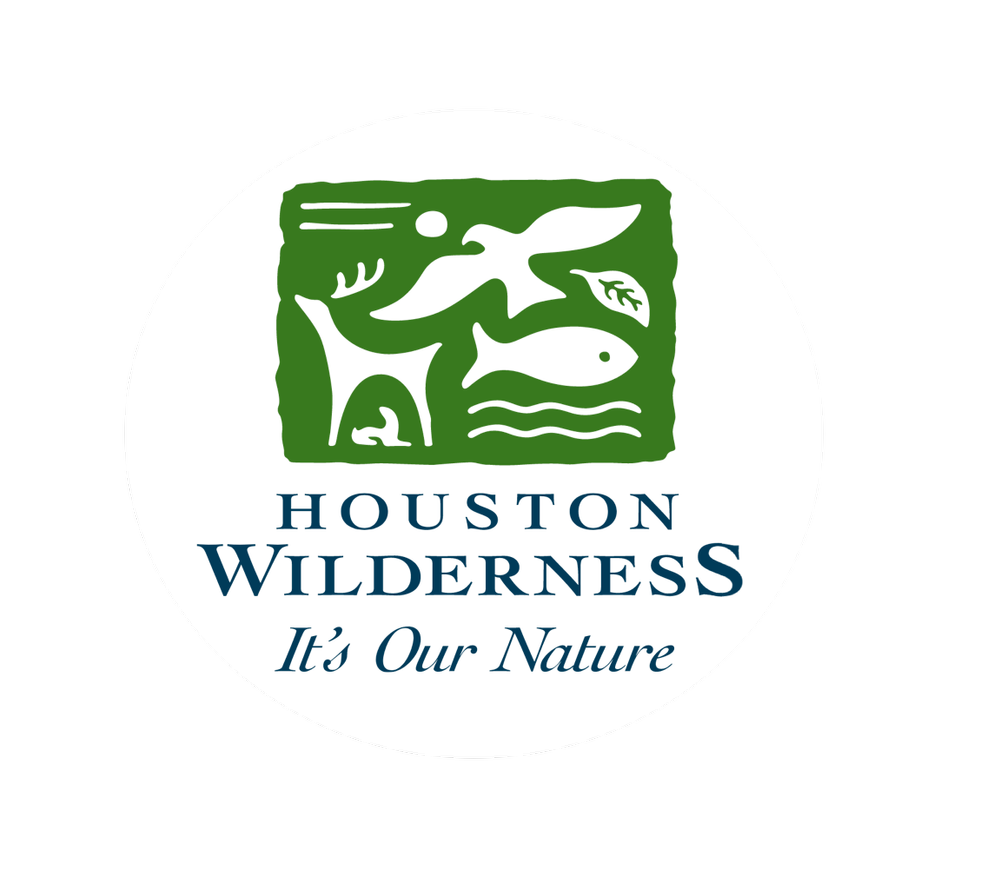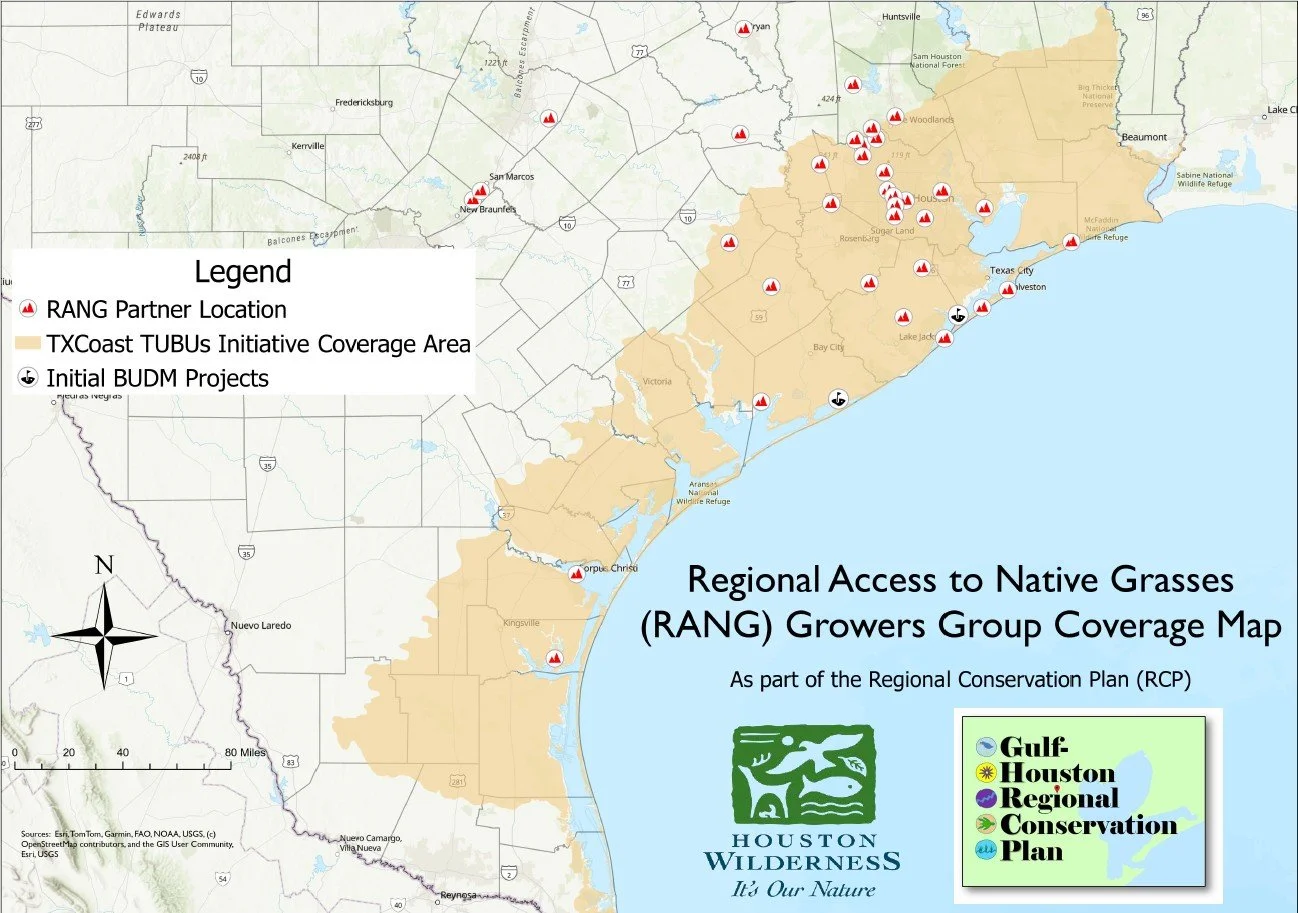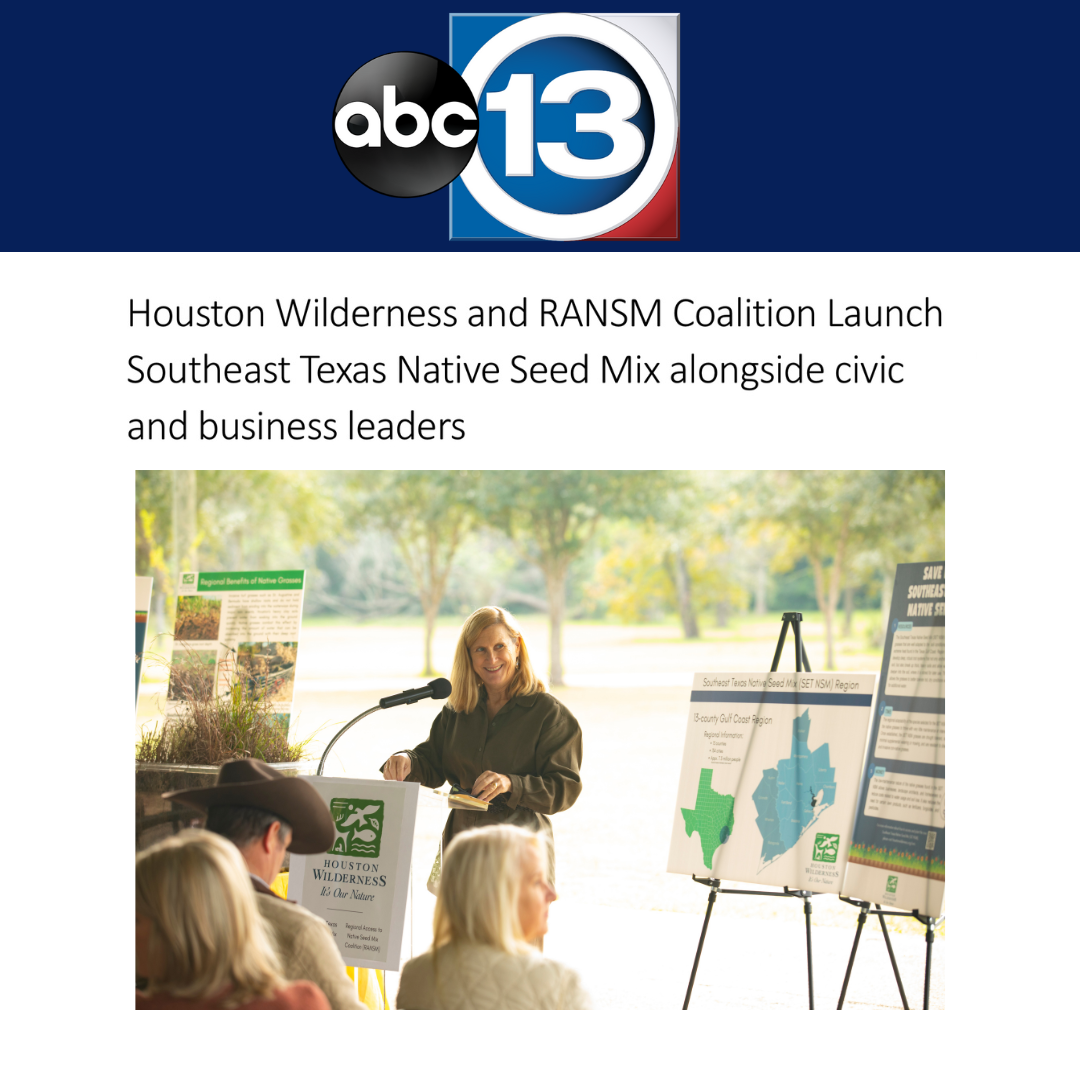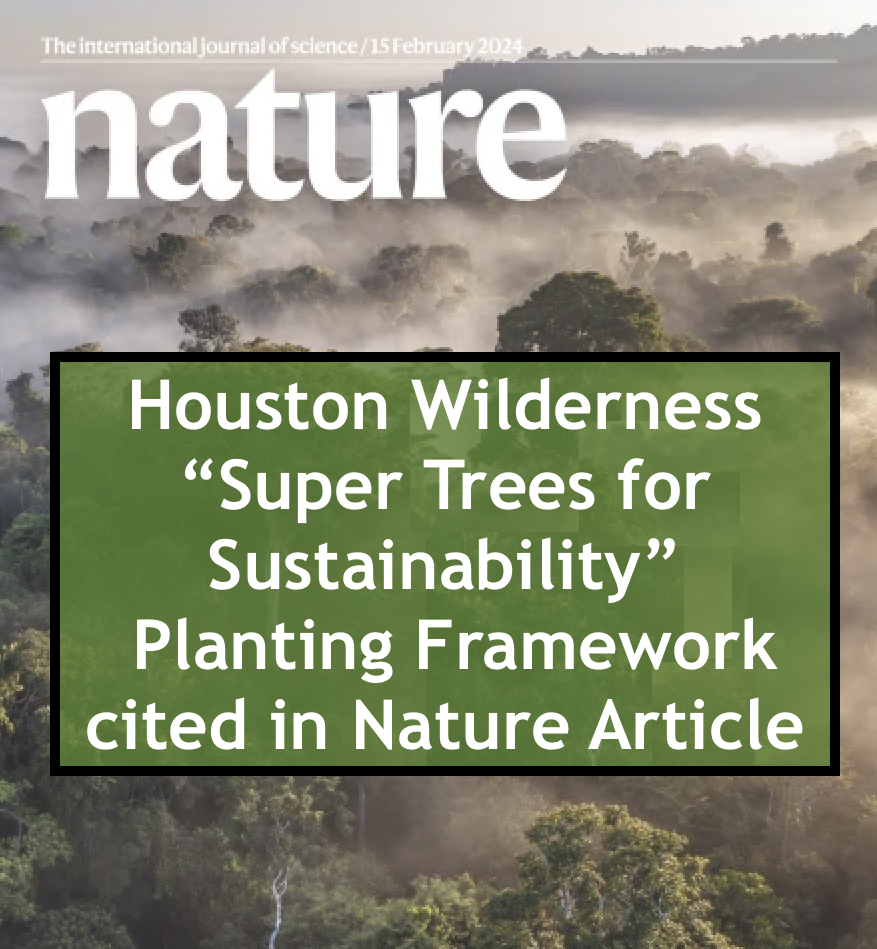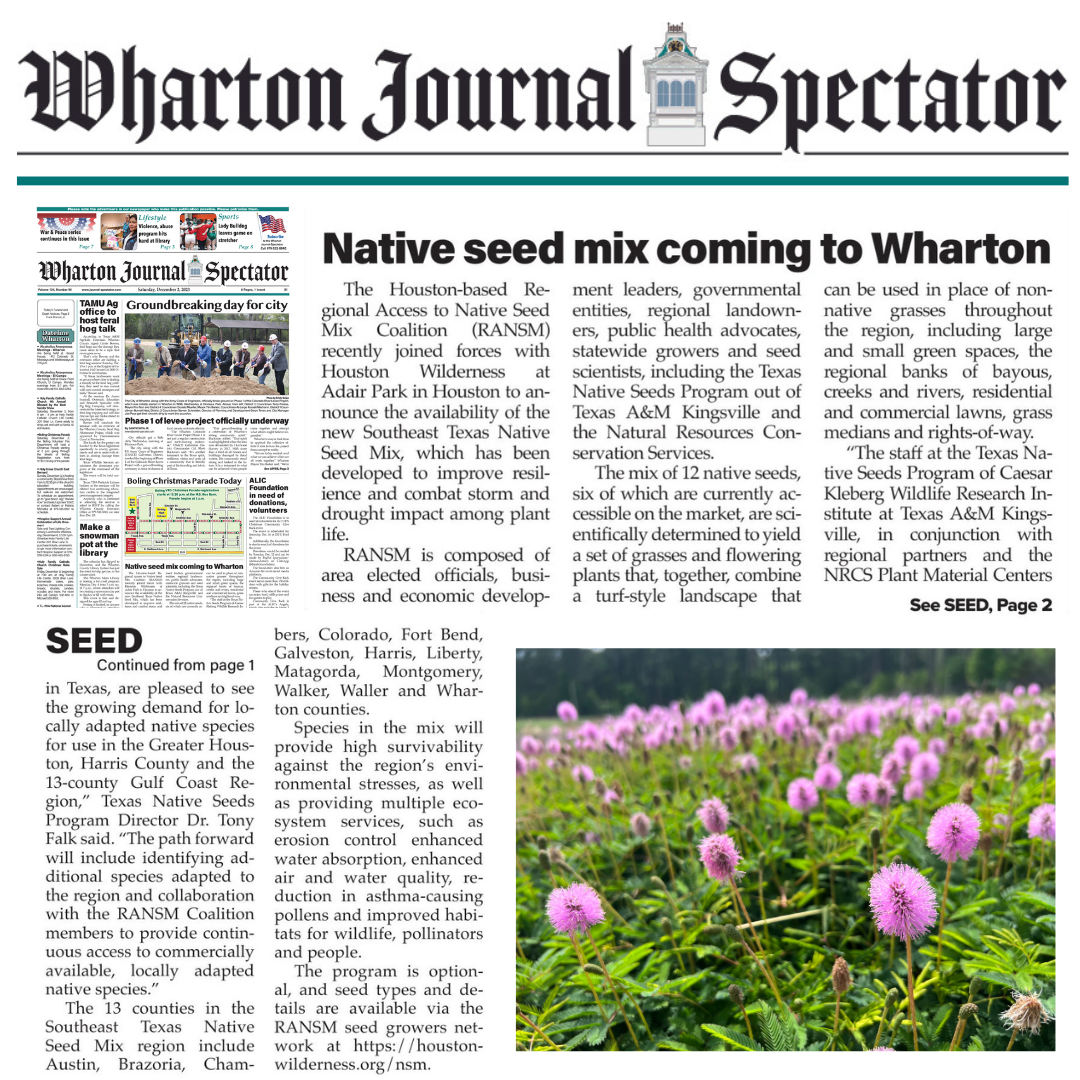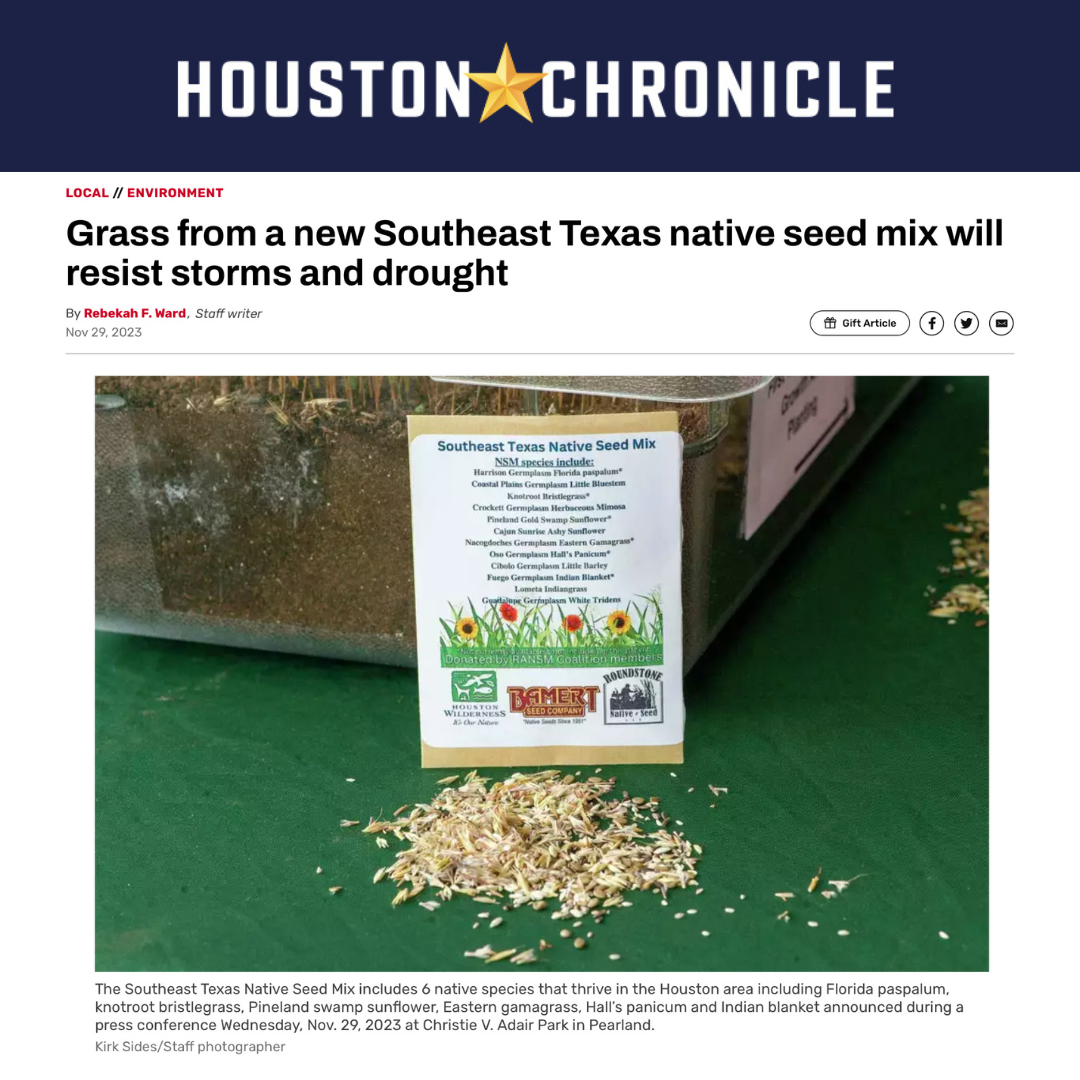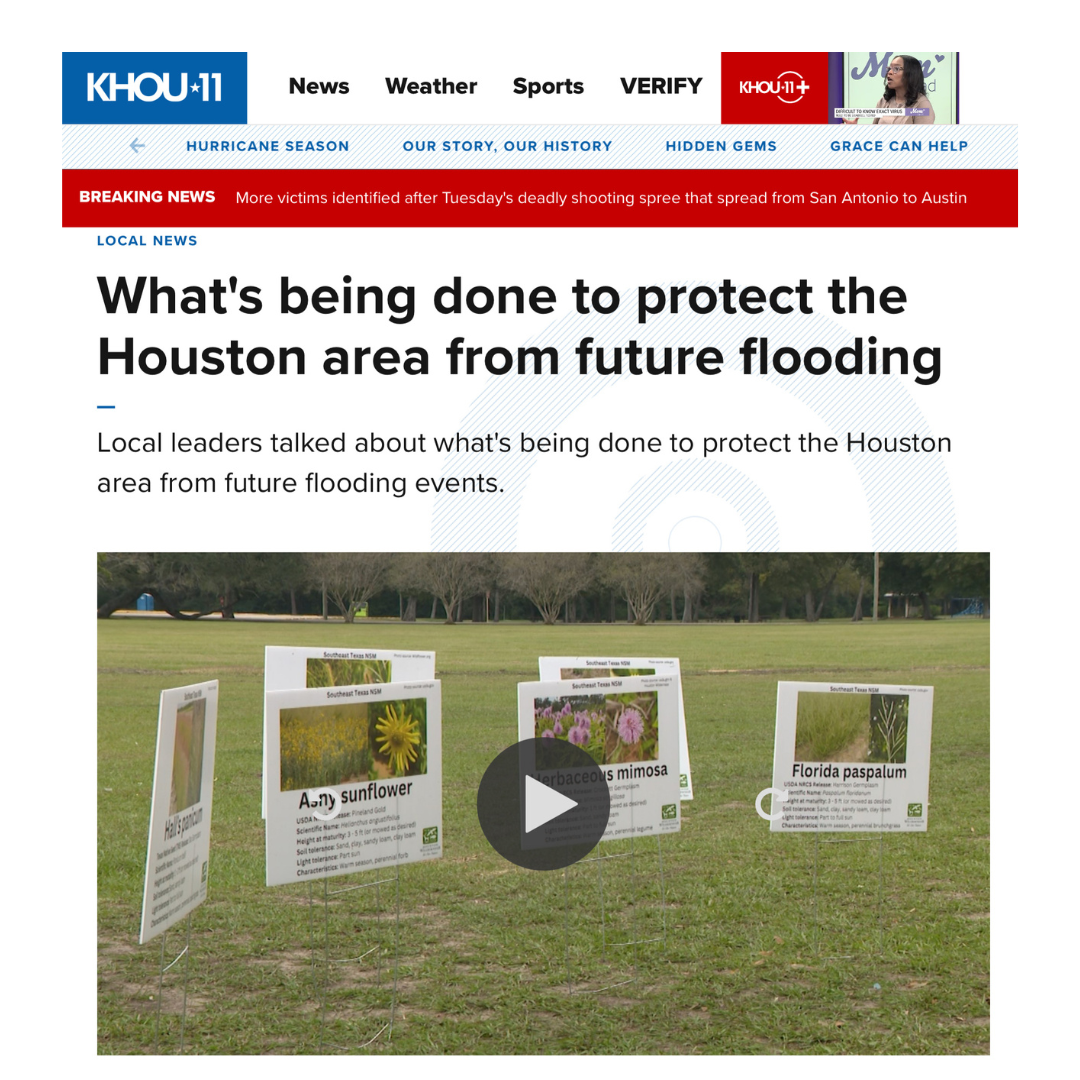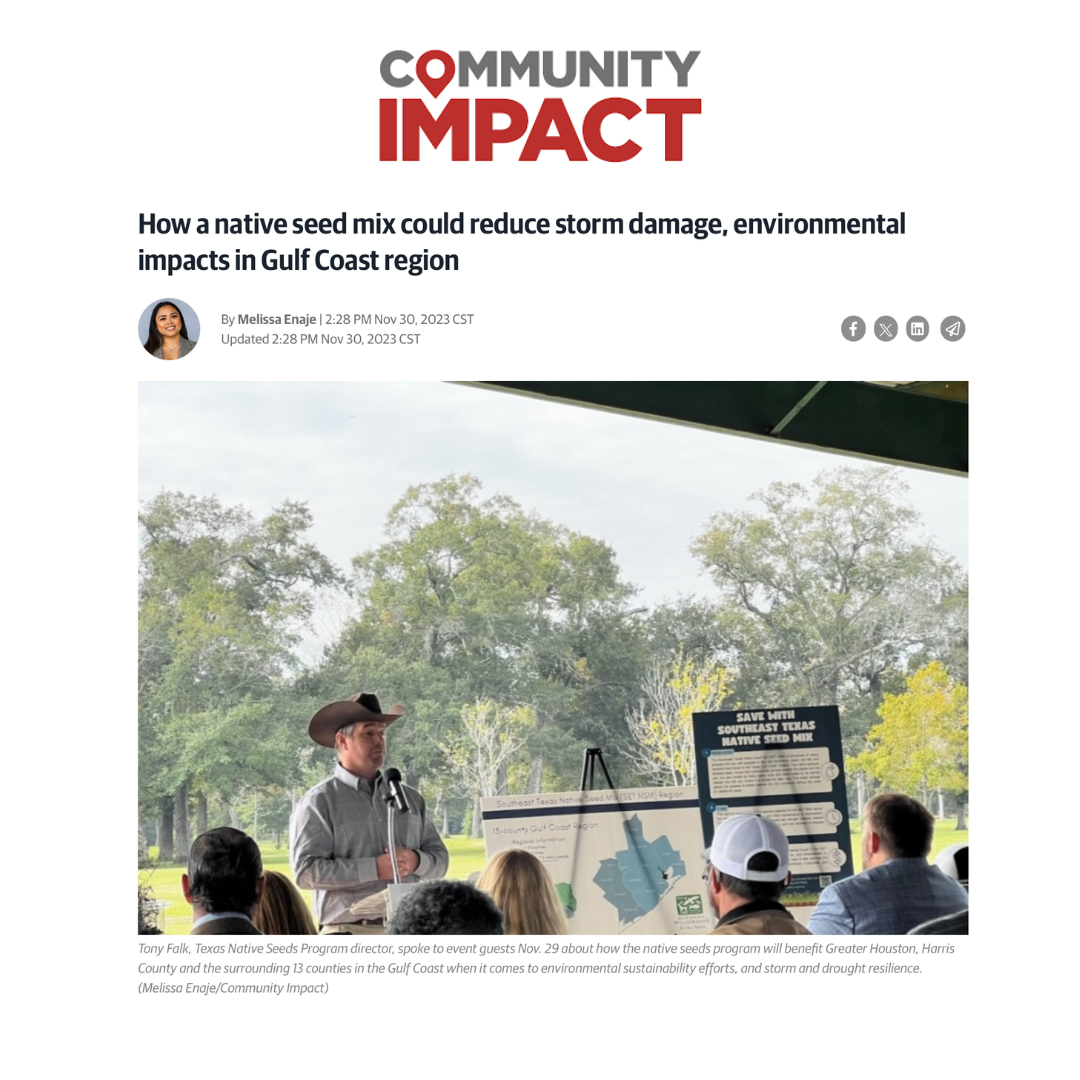Multi-County Gulf-Houston Regional Conservation Plan
The Gulf-Houston Regional Conservation Plan (RCP) is a decade-long collaborative in which Houston Wilderness facilitates a Steering Committee of environmental, business and government entities to work toward reaching the RCP’s 3 key resiliency goals – 1) targeting additional protected/preserved green space in the 8-county Gulf-Houston region by increasing the current 16.3% in protected/preserved land to 24% of land coverage by 2040, 2) implementation of green and blue nature-based infrastructure (NBI) enhancements by increasing and supporting land management efforts to install NBI on 50% of land coverage by 2040, and 3) substantial installation of native vegetation annually that provides carbon ecosystem increases in the 20-county Texas coastal region involving all seven coastal estuaries along the Texas Coast through facilitation of the Texas Coast Targeted-Use-of-Beneficial-Uses (TxCoast TUBUs) Initiative coordinated with the Regional Access to Native Grasses (RANG) Growers Group, and multiple collaborative projects. In conjunction with the RCP Steering Committee, HW organized the RANG Growers Group, comprised of all interested native grass and other pertinent coastal vegetation growers and suppliers in the 20-county Gulf-Houston region - including the entire Texas coast, to develop a strategy for significant expansion of native grasses and other targeted pertinent vegetation for use in various large-scale NBI projects along the coast - particularly related to USACE Beneficial Use of Dredged Material (BUDM) projects.
Houston Wilderness (HW) faciliates the Gulf-Houston RCP to assist in coordinating & expanding multiple native grass nurseries/farms/contractors around the Texas coastal region to accommodate the large number of wetland and coastal NBI projects that will require very large numbers of targeted native plants - particularly seagrasses, marsh and dune grasses, bioswale grasses, other wetland grasses, and targeted coastal shrubs.
The Targeted Use of Beneficial Use (TUBUs) Initiative is a collaborative effort between Houston Wilderness and multiple partners under the Gulf-Houston Regional Conservation Plan (RCP) Steering Committee and the RANG Growers Group, including:
1) USACE-Galveston District: Provide engineering expertise for, and construction of, the newly-created lands. Native grasses/forbs will be installed to provide beautification/infiltration and improve water quality.
2) TxGLO: assisting in coordination of projects contained the Texas Coastal Resiliency Plan for vegetation planting under the TxCoast TUBUs Initiative
3) RANG Growers Group members, including private/public native grass and other vegetation growers/suppliers, Houston Audubon and Coastal Bend & Bay Estuary Program: coordination and capacity building for substantial increase in access and availability of native vegetation for large-scale land and water restoration projects.
4) Institute for a Disaster Resilient Texas (IDRT) at Texas A&M University Galveston and UT Marine Science Center (Port Aransas): Provide analysis, research and technical support on coastal resiliency modeling and impacts
5) RCP Steering Committee members: will provide scientific and technical support and advise on process and use of targeted native vegetation throughout the Texas Coast
STATUS OF THE THREE KEY GOALS
(1) 24% by 2040 - Increasing the current 16.3% in protected/preserved land in the eight-county region to 24% of land coverage by 2040 (includes Brazoria, Chambers, Galveston, Fort Bend, Harris, Liberty, Montgomery, and Waller counties)
(2) 50% by 2040 - Increasing and supporting the land and water management efforts to install nature-based infrastructure on 50% of public and private lands by 2040 (includes the five (5) inland counties - Harris, Fort Bend, Waller, Montgomery, and Liberty, and the 15 coastal counties - from Jefferson County on the northern Texas coast westward to Cameron County on the far south of the Texas coast)
(3) Annual Carbon Sequestration - Substantial implementation of native vegetation annually that provides green and blue carbon ecosystem increases through carbon absorption in native soils, plants, trees, and oyster reefs throughout the inland and coastal counties region (includes the five (5) inland counties - Harris, Fort Bend, Waller, Montgomery, and Liberty, and the 15 coastal counties - from Jefferson County on the northern Texas coast westward to Cameron County on the far south of the Texas coast)
TWO-PAGER ON ACTION ITEMS & RESOURCES
1st Key Goal - Protected/Preserved Lands
Click here to read Two-Pager on the clay-based soils of the 8-County Gulf-Houston Region
